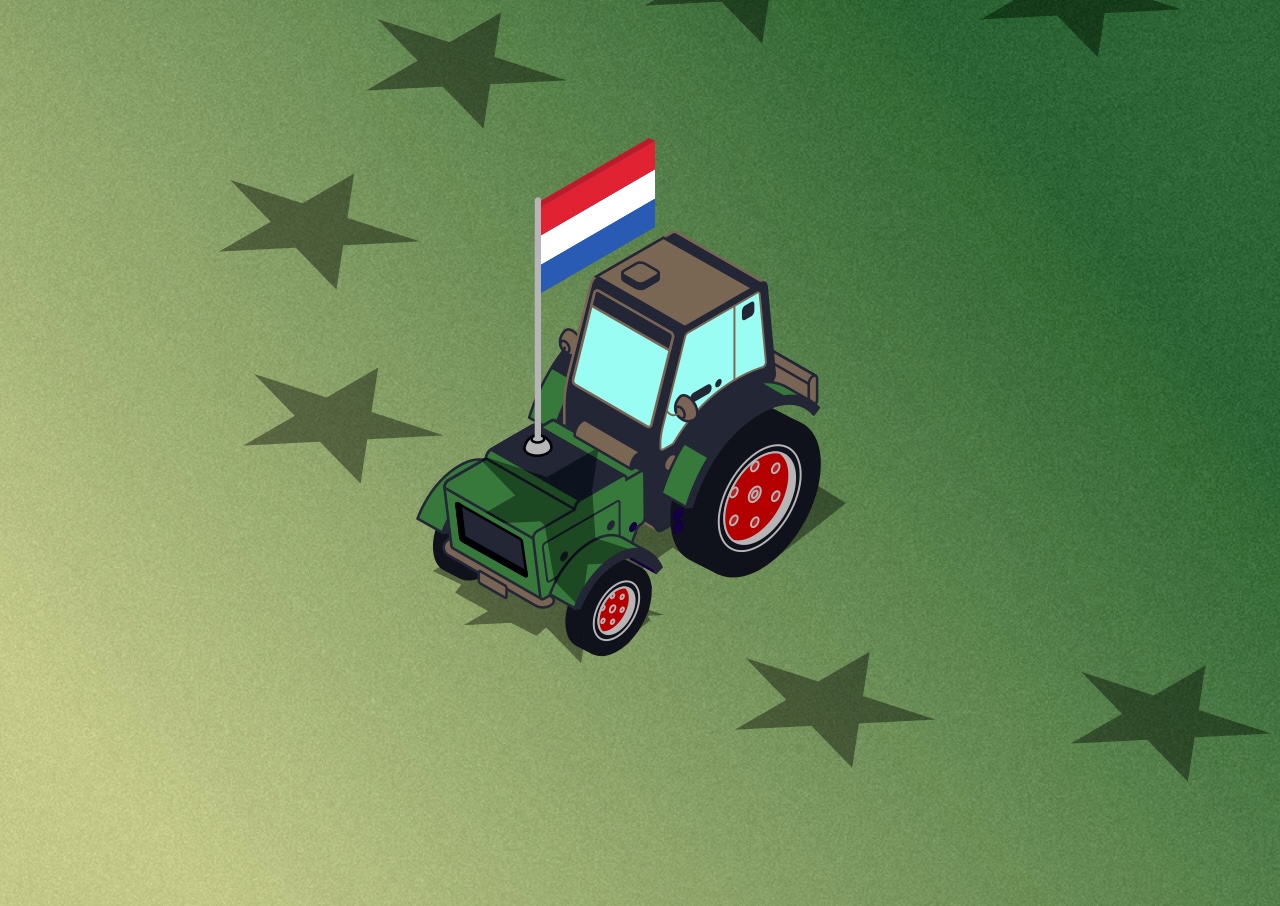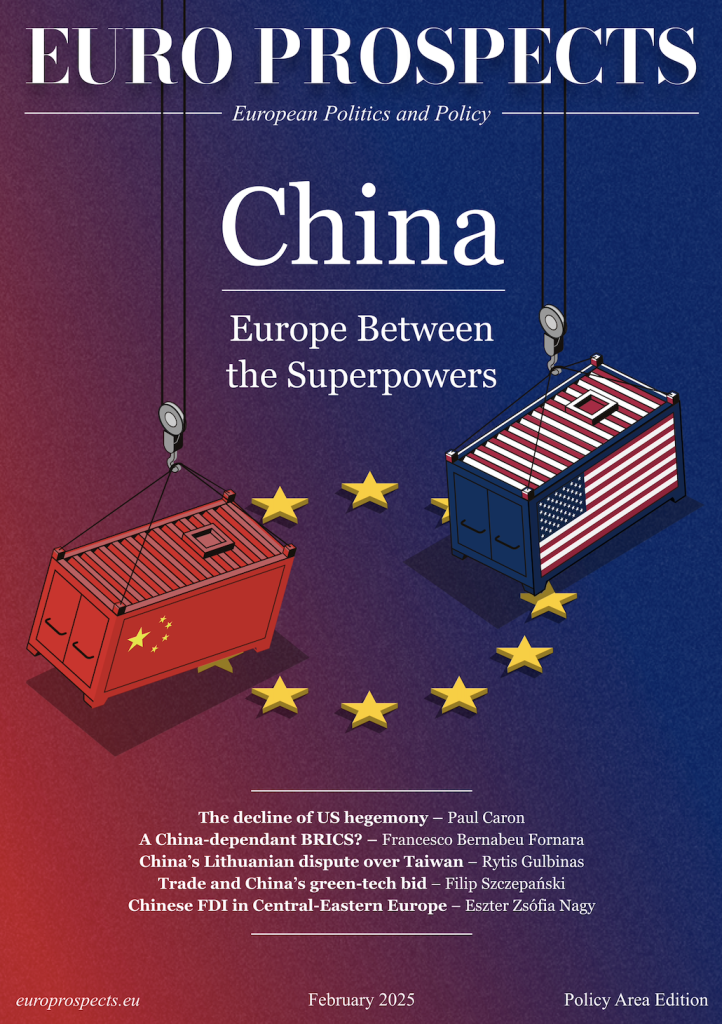
7 min read — Netherlands | EU | Policy | Protest
From Farmers to Brussels: How Dutch Domestic Protests Shaped EU Environmental Politics

By Ximena López Pérez — Netherlands Correspondent
Edited/Reviewed by: Zainab Farooqui
August 5, 2025 | 12:30
The Netherlands’ highest administrative court, the Raad van State (Council of State), declared in May 2019 that the government’s nitrogen emissions policies were in violation of EU environmental regulations, sparking the start of the country’s nitrogen crisis, which in turn sparked the notorious farmer protests that followed. As a result, the court’s ruling halted all building permits in regions that exceeded nitrogen limits, forcing the government to abide by EU regulations.
Furthermore, the government was persuaded by the ruling to create a plan to cut nitrogen emissions by as much as 70% by 2030, with a focus on the agricultural sector, which had been a major source of ammonia and nitrogen oxide emissions. More restrictions on farming practices and a halving of livestock were among the proposed measures. All of these actions were seen as posing an existential risk to the farmers’ way of life.
In fact, the farmers took action that signalled the start of a string of widespread demonstrations by Dutch farmers, whose movement continues to this day. One of the most intense protests in Dutch history took place on October 1, 2019, when more than 2,000 farmers drove their tractors to The Hague, seriously disrupting traffic. Farmers continued to demonstrate against the government’s policies in 2020 and 2021, blocking roads, warehouses, and even airports.
The disturbance served as a reminder of the conflict between national environmental regulations and the agricultural industry’s financial realities. In the end, it compelled Brussels to reevaluate the scope and direction of its green aspirations, highlighting the impact of EU environmental laws on national policies.
However, Greenpeace Netherlands sued the Dutch government in January 2025, claiming that it had not met its targets for reducing nitrogen emissions. The government must act immediately to cut emissions by 2030 or risk a €10 million fine, the court decided in favour of Greenpeace. In addition to its important ruling, the ruling highlighted the judiciary’s role in upholding EU environmental standards and the pressure on national governments to do the same.
The legal escalation, when combined with growing political and public unrest, put the Netherlands at the forefront of a broader European discussion. Since then, the Dutch crisis has shaped important discussions about EU policy, especially those pertaining to the Common Agricultural Policy (CAP) and the Green Deal. The demonstrations provoked a wider discussion about national sovereignty in the application of EU directives and forced policymakers to reevaluate how to strike a balance between environmental aspirations and economic and social realities. One thing stood out: for green policies to be successful, locals must be involved in the process rather than being treated as collateral damage.
A political turning point
Beyond demonstrations, the crisis’s domestic repercussions led to a dramatic change in Dutch politics. The most notable example of how rural discontent was transformed into political momentum was the emergence of the Farmer–Citizen Movement, also known as the BoerBurgerBeweging (BBB). The BBB became the biggest party in a number of areas, including Friesland and Limburg, in the 2023 provincial elections.
The BBB’s success demonstrated the influence that rural constituencies now have in national decision-making and reflected a widening political rift. More than that, though, it brought attention to the growing gap between rural and urban areas. Many rural communities feel singled out, isolated, and economically threatened, despite the fact that urbanites generally support environmental reforms that are in line with EU targets. The crisis deepened the cultural fault lines surrounding the Netherlands’ role in the European Union and exacerbated these urban-rural divides under an already precarious political demographic fragmentation. While most people in cities are still pro-EU, there is a growing scepticism or outright resistance in rural areas, creating a polarised atmosphere that is reflected throughout Europe.
“Brussels interference” is a potent narrative at the centre of this divide. Farmers and politicians who support protests frequently view EU regulations as top-down mandates that disregard local livelihoods and national autonomy. This framing has reverberated throughout other member states dealing with comparable tensions and has made it more challenging for national governments to implement EU directives without facing domestic resistance.
Media, rhetoric, and crossing borders
The role of populist rhetoric and Dutch media is to amplify these dynamics. The conflict was often presented as a battle between “common farmers” and “out-of-touch elites” in protest coverage. This narrative, which portrayed the farmers as champions of economic justice and national identity rather than as obstructionists, resonated with the public and contributed to the BBB’s ascent. By doing this, media representations influenced public opinion and fuelled a larger conversation about what sustainable policymaking ought to entail.
Dutch farmers’ influence extended beyond the boundaries of the Netherlands. Farmers in France, Germany, Belgium, and Poland began their own protests at the beginning of 2024, many of them specifically referencing the Dutch example. German and Belgian farmers protested against pesticide bans and nitrogen limits, while French farmers blocked roads and supermarkets. In Poland, nationalism and long-standing rural dissatisfaction combined to challenge EU environmental authority.
A key component of the Farm to Fork strategy, the European Commission’s proposed law to cut pesticide use in half by 2030 was withdrawn in response to widespread unrest throughout Europe. Under pressure from several member states, Brussels also delayed tighter regulations on livestock emissions and land use.
Rewriting the political playbook
The extensive farmer backlash in the Netherlands and throughout Europe served as a stark reminder that significant environmental changes that are not accompanied by local consultation are politically untenable. Consequently, the EU has begun to reevaluate. More political consideration is now being given to the framing of future directives, which place an emphasis on flexibility, stakeholder consultation, and gradual transitions. The fact that rural voters are no longer a silent constituency is becoming increasingly recognised in Brussels.
One thing is clear: the Dutch protests challenged more than just national policy. It remains to be seen if this new strategy leads to long-term progress or policy dilution. They revised the political strategy for the green transition in Europe.
Disclaimer: While Euro Prospects encourages open and free discourse, the opinions expressed in this article are those of the author(s) and do not necessarily reflect the official policy or views of Euro Prospects or its editorial board.
Write and publish your own article on Euro Prospects
Subscribe to our newsletter – stay informed when we publish articles on pressing European affairs.

